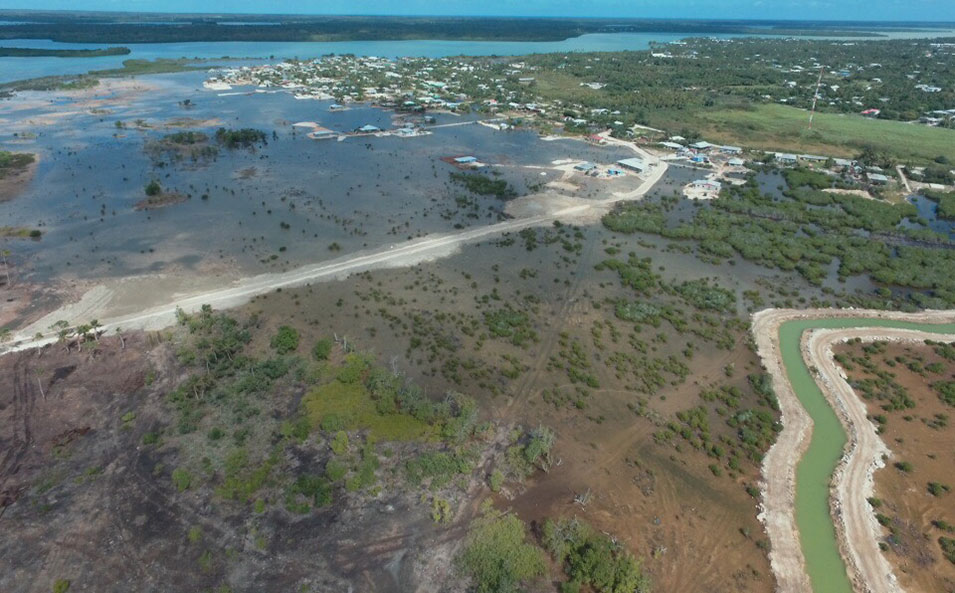
By Mary Lyn Fonua
Important questions over massive environmental damage caused by site works for the Va'epopua 18-holes golf course and its associated commercial developments remain unanswered, in spite of fears that the project is killing the reef and endangering the health and fishing livelihoods of its coastal communities.
Aerial photographs taken after heavy rains in May revealed that the project's canal, a one to two kilometres long open drainage channel dug into the reef, has turned a putrid green – the colour of algae often associated with "sick waterways" in developing countries.
Photos showed the overflowing green canals were draining into the Fanga'uta Lagoon entrance near the capital Nuku'alofa. The canals clearly extend beyond the known boundaries of the golf course project. They connect to the hazardous old Tukutonga Town Dumpsite on the Popua seafront, which was closed in recent years when toxins were known to be leaking into the adjacent sea and swamplands.
Why the canals were allowed to be cut deep into the old dumpsite is unknown.
A Va'epopua Park development on the buried dumpsite and the adjacent 18-holes golf course development on the swamplands are both projects led by Tonga's Prime Minister, Hon. 'Akilisi Pohiva. Funding for the golf course project is not transparent.
The Popua canals were dug by private contractors under direction of the Prime Minister, pushing ahead an estimated $12 million golf-course project that was started under quasi-government management even before a statutory environmental impact assessment (EIA) was done on the fragile site.
Last night a concerned parliamentarian, Lord Vaea, expressed concern that funding intended for developing sports in Tonga is being earmarked to build unplanned facilities, and he had heard that the latest extension of the golf course project includes a plan by the developers to drive steel piles for building wharfs. The wharfs will apparently allow yachts to dock inside wetlands that are unsuitable for harbouring vessels.
Much remains unknown about the secretive project.
But the environmental degradation is obvious.
A former Minister of Education, Dr 'Ana Maui Taufe'ulungaki, who believes the important ancient landscape in the fragile area should be preserved, understood that the massive habitat and environmental destruction taking place at the mouth of the lagoon should not have happened because Tonga has clear environmental laws that were intended to protect such areas.
"This project will kill the reef and the fisheries the reef supports," she said yesterday.
Fresh water to be pumped into the area from Tongatapu's precious underground lenses will be equivalent to 35% of Nuku'alofa's daily use with potentially devastating impacts.
Conflicted
A late attempt to produce an environmental assessment was made by government after the project was started.
Last week, after many requests, Matangi Tonga was allowed to sight their EIA report titled "Environmental Impact Assessment. Proposed 18-holes Golf Course, Patangata, Tongatapu, Kingdom of Tonga" dated March 2017, which is locked away in the office of the Environment Division. The CEO of Environment (MEIDECCC) Paula Ma'u, instructed that the EIA may not be photocopied. Access to the document was offered for public sighting for 10 days in April - but not many people knew about it.
"I hope you are not going to report on this," an environmental officer told us when we sighted the document in the EIA unit.
The environmental impact assessment (EIA) states that the reason for the study is because the proposed golf course is classified as a major project: "an EIA Report is therefore required under the Environmental Act 2003 for this project."
The cover states: "The report was prepared to analyze potential environmental effects associated with the construction of an international 18 holes golf course for the South Pacific games at Patangata, Tongatapu."
It also states that "A National Plan prepared for this area in 1989 shows potential development for this area to include hotels and an 18 holes golf course. Government intends to pursue part of this plan.
"However, before this proposed project can proceed there are permits that need to be approved by different authorities, including an assessment of the environmental impact of this project."
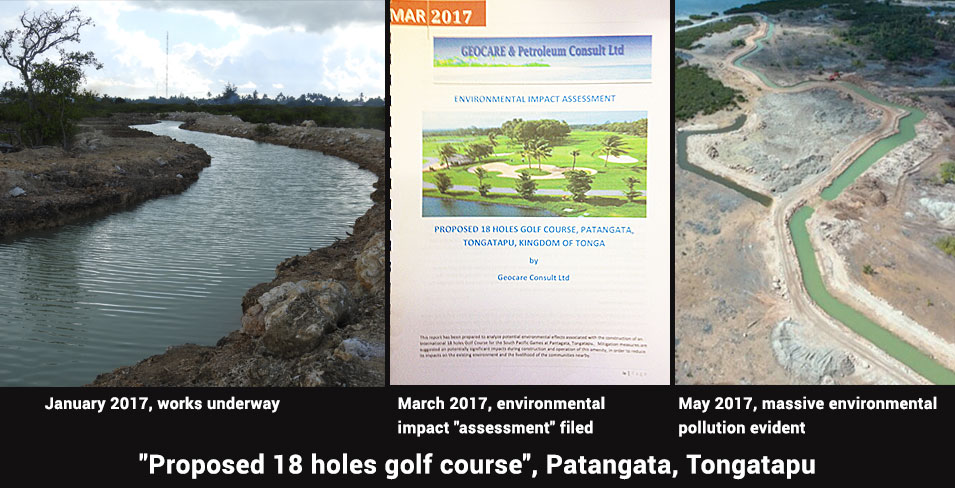
Massive impacts
The belated EIA prepared by a local consultant Geocare & Petroleum Consult Ltd. identified 39 potential environmental impacts, of which it classified 21 as "massive". Another 16 potentially significant impacts are classified as "substantial" and two "significant". Only a few of the impacts were regarded as being positive, such as bringing jobs, income and better services to a poor area.
The report that relies heavily on old soil and water toxicity data as well as community surveys conducted by high school students, fails to mention that the project works had already started. Some obvious impacts, such as the canals (drainage channels) connecting to the dumpsite, were not considered.
In spite of its own alarming findings that the development will cause massive and irreversible environmental degradation with an ongoing high risk of pollution to a fragile ecosystem, the EIA goes ahead and rubber-stamps the highly controversial development.
Golf course plan
A conceptual plan prepared by a Florida golf course architect for the Ministry of Lands & Natural Resources in January this year is poorly illustrated in the EIA. It says the golf course will be built on 139.5-169.5 acres at the swampy entrance to Tongatapu's Fanga'uta Lagoon. The construction aims to stop the seawater tidal flows in the wetlands. Maintenance of turf includes using of fertilizers and pesticide.
Large ponds will be dug to hold fresh water. Water features and sand bunkers will take up around 11-20 acres of the landscaping.
Canals are not mentioned in the 102 page report, but they are shown on the golf course plan linking ponds and described as a "drainage system" which will also provide the material to build roads.
"The plan is to build a road around the perimeter of the golf course and this is to be done using dredging and fill method whereby the dredged material is being used to build the road. This drainage system will tie in with the three ponds to be built inside the golf course or irrigation purposes...Water from effluent collection ponds will be administered to the golf course via an automatic irrigation system."
Water demands
According to the report the Tonga Water Board (TWB) has agreed to supply water to fill the the ponds with fresh water, drawn largely from Tongatapu's small, limited and precious underground water resources.
The EIA states that an estimated 2650 m3 -3785m3 per day of fresh water is essential for irrigation, adding that "scarce water resources" will need augmentation.
It reveals that most of the fresh water for the initial irrigation would be supplied by the Tonga Water Board from Mataki'eua 10kms away - a daily amount equivalent to 35% of the total water consumed in the capital Nuku'alofa daily, and that the fragile water supply is already being exploited with increased pumping for the project.
"TWB Chief Engineer Quddus Fielea, who assured us they are upgrading their capacity...revealed that they would be ready to supply the requirement of the golf course," the EIA stated.
"TWB is currently undergoing a water supply improvement that would reach the capacity of about 15,725m3/day. This would be sufficient to supply Nuku’alofa, which is estimated at 11,000m3/day and the golf course at about 3,800m3/day."
"Putting fertilizer on the golf course and using pesticide to remove weeds will not affect the two villages’ water supply because it is sourced from about 10km away. However the main concern is on leakages to nearby sea and lagoon," the EIA stated.
Over-stressed lagoon
It cites a water monitoring study conducted between 2010 to 2013, as component of the Integrated Urban Development Sector Project (IUDSP) which found faecal coliform, ammonia, nitrate and phosphate pollution.
"The stress faced by the lagoon due to low water circulation, pollution, high sedimentation, blasting and possibly toxic fisheries, has led the Ministry of Health to issue warning on consuming anything raw on the western part of the lagoon," stated the EIA.
The same EIA also cited decades old data that found extremely high concentrations of pollutants including heavy metals like zinc many times over acceptable level, in spot soil samples at the Tukutonga dumpsite, - in the years before Tongans began widely using appliances that have lead batteries. Lead is now a bigger concern.
The EIA not only fails to mention that work on the golf course had already begun but also ignores the fact that the new canals were extending beyond the boundaries of the golf course and are actually draining the old dumpsite.
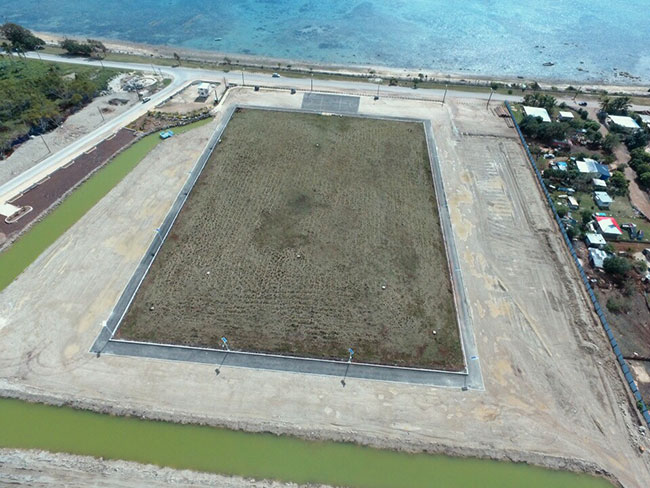
Maintenance challenge
The over-utilized, poorly established uncontrolled dump was closed under a six year AusAID funded waste management project that cautioned about the ongoing challenges of maintenance to prevent leakage of high concentrations of heavy metals and toxins identified in soil and water tests. NZAP funded the rehabilitation of the 10 acres dumpsite from 2006-2009 and the worst area was covered over in the central three acres mound with vents.
"Maintenance requirements for the project did not adequately consider who would be responsible for the rehabilitated site and their capacity to maintain it, including the monitoring and mitigation of ongoing environmental and social impacts. It is therefore not certain that maintenance will be properly undertaken," cautioned MDFAT/AusAid in 2013.
Those cautions make the secrecy surrounding the golf-course land development more alarming and environmentalists are not the only ones concerned.
People's petition
In 2015 Tonga's parliament accepted a people's petition signed by over 700 people calling to preserve the area at the entrance to the Fanga'uta Lagoon as a heritage site, protecting the complex remains of an important archaeological site
President of the Tonga Heritage Society Dr 'Ana Taufe'ulungaki, who supported the petition, said the aerial photos of the site today are shocking. "They give you an idea of the extent of the damage that has already been done at Popua," she said.
Lord Vaea, acting President of TASANOC (Tonga Sports Association and National Olympic Committee) told Matangi Tonga that the golf course was not part of the original Tonga Pacific Games planning and financial budget.
"The Popua new golf course was only apparent when Government withdrew from hosting the 2019 Pacific Games. The second to last paragraph in the PM's letter of withdrawal highlighted the ongoing construction of the 'new golf course'. The other facilities were known and budgeted for."
Lord Vaea believed government had failed to conduct a proper environmental assessment.
"The Popua Golf Course is PM driven and therefore receives approval without assessment. Government construction on Popua continued despite its historical and heritage importance as the petition clearly stated," he said.
"The original heritage petition that was sent in to Parliament concluded with government. There was no reply from government and they failed to inform the heritage [petitioners] of the pending construction," Lord Vaea said.
"There is little knowledge of the new Popua golf course's dimension, layout, canal system, and overall environmental planning. The only apparent information available is that 'Etuate Lavulavu is the construction supervisor.
"[The] Ministry of Environment, Lands, Planning Authority, Health and Infrastructure failed to perform an environmental impact assessment on Popua and the new golf course construction".
Lacks surveys
Tonga's health authorities today are admitting they lack surveys on current toxicity of heavy metals contamination of soil and water in the area.
They know more about other pollutants. Poor sanitation from bottomless septic tanks and cracked concrete tanks was already producing strains of E coli in the Va'epopua golf course coastal waters, while high phosphate concentrations - which accelerate the formation of algae and seaweed and deprive fish of oxygen - were above acceptable limits, even before the canals were dug. Rising ammonia and ammonium levels (that can kill fish) in the water off Popua are a concern for fisheries.
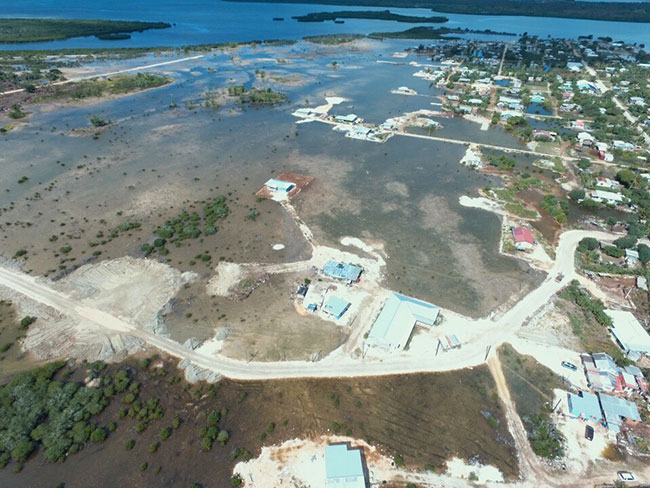
Health bypassed
Tonga's Director of Health Dr Siale 'Akau'ola said he had not seen an environmental impact assessment for the golf course development. "I am on that committee but I think it was done when I was away in April," he said. "If there is any suspicion of heavy metals, for example, lead, those are the things that we would be concerned about...definitely the heavy metals need to be analysed…As you know we haven't really done surveys on heavy metals..."
Other options
The late EIA written by Talanoa Fuka Kitekei'aho briefly mentions three alternative options for the site, and dismisses them:
- "Extending the 9 holes at 'Atele disregarded because land is privately owned;
- Reserving land for settlement was not considered further due to health and disaster reasons [sea level rise, tsunami zone];
- The cost of 'Doing nothing option' was considered too high and not considered further".
It also noted that "the areas of Popua and Patangata are low lying and are prone to inundation by tsunami waves. In considering this alternative, it was decided that subdivision of land for resettlement is not the best option for this area."
Unfortunate
The EIA report does not list heritage conservation as an option for the site apart from token features, some of which had already been damaged or destroyed by the earthworks. It does not reference the Sia Heu Lupe conservation petition or the detailed resource documents attached it that were given to government. It does not reference Tonga's own national heritage laws. It dismisses the prospect in one sentence stating: "It is unfortunate that this site has not been declared as National Heritage Site."
The limited amateur survey claimed that the communities are happy with the development of the golf course and "more than 90% are in favour of the proposed project".
"The people welcome new development in their area including hotel, park and the proposed project. [The golf course] provides added value to land nearby and in time to come may attract a Five Stars Hotel development on the island of Nukunukumotu nearby."
Nukunukumotu is in a high tsunami risk zone.
At two scoping meetings, it said were conducted for Nukunukumotu/Patangata and Popua villages in mid-March, any last minute concern by members of the communities was allowed to be heard. However, only 14-15 people, who according to the EIA were carefully selected by the town officers, attended the two meetings, "the low attendance is due to people out fishing," stated the EIA that went on to conclude "Everyone in the meeting support the project which was done with a show of hands. They see benefits originating from the project in term of aesthetic value, jobs opportunities and selling of handicrafts. The meeting finished at 8.20pm with some great Chinese Kentucky meals."
The EIA does not mention the petition of over 700 people against the development of the site that was accepted by parliament.

Land ownership
Lord Vaea, a current member of parliament, who received the petition, said there also remained questions of ownership of the land. He believed that Lord Fakafanua is the swamp land owner and that the Fakafanua family can live on the island adjacent to Patangata.
"The question of ownership, as I understood it, after court cases between government and Fakafanua concluded with Fakafanua as the owner. This was the 1970s. ...The Minister of Lands approved the settlement. The Minister of Lands allowed settlers and golf course construction on the swamp area. Otherwise, PM wouldn't have ventured on the site."
"There is little knowledge of the planning for settlement and golf course in the swamp area," he told Matangi Tonga.
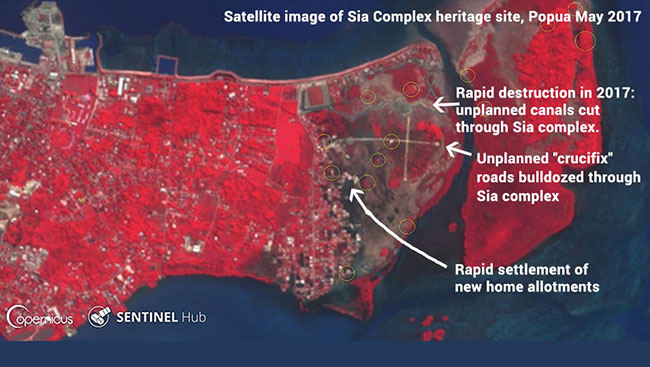


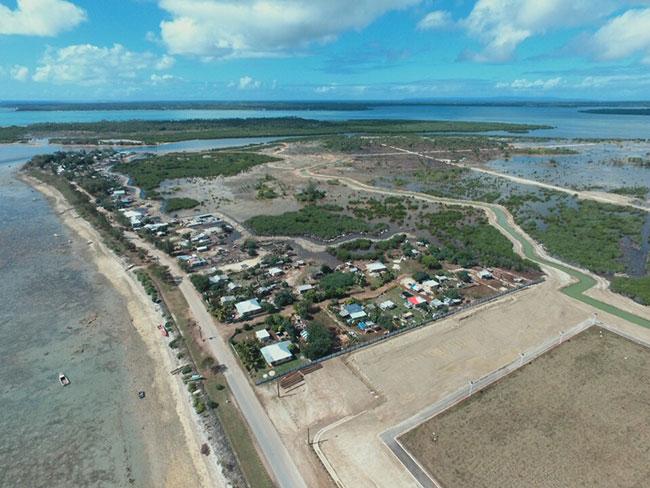
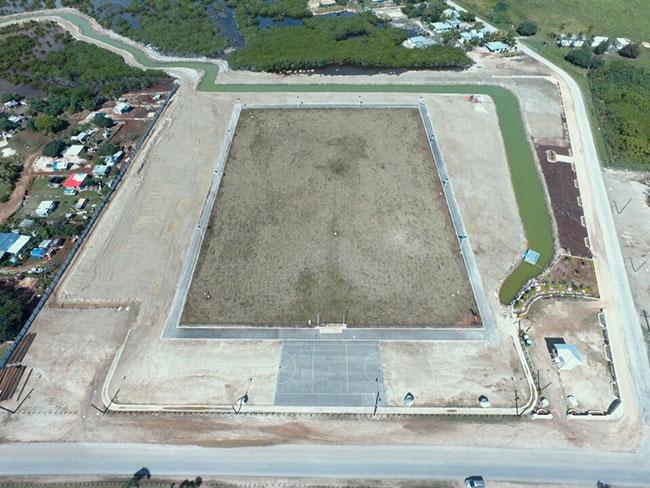

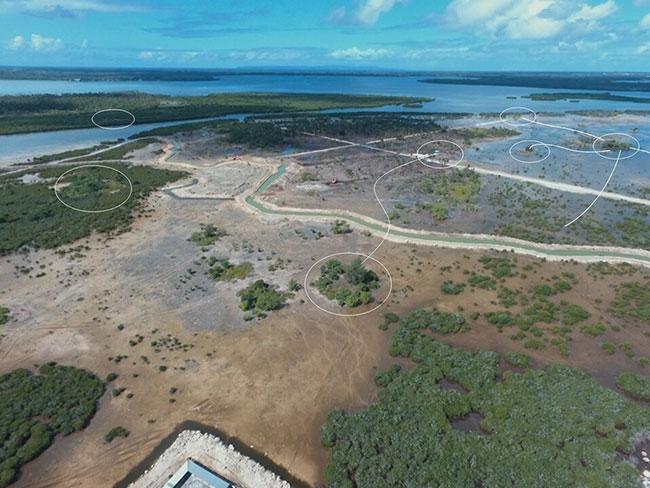
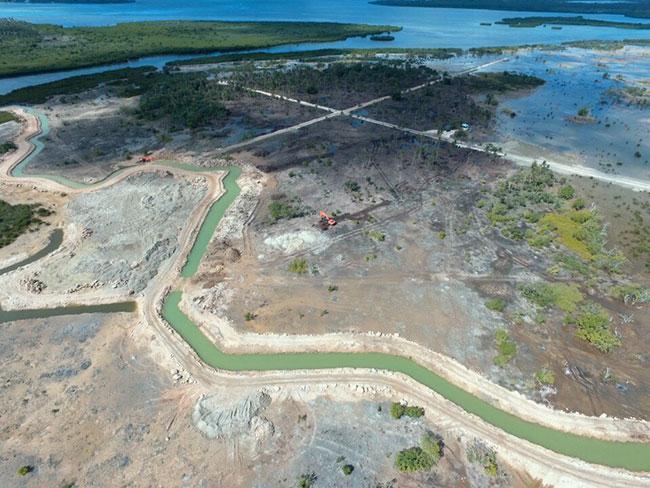
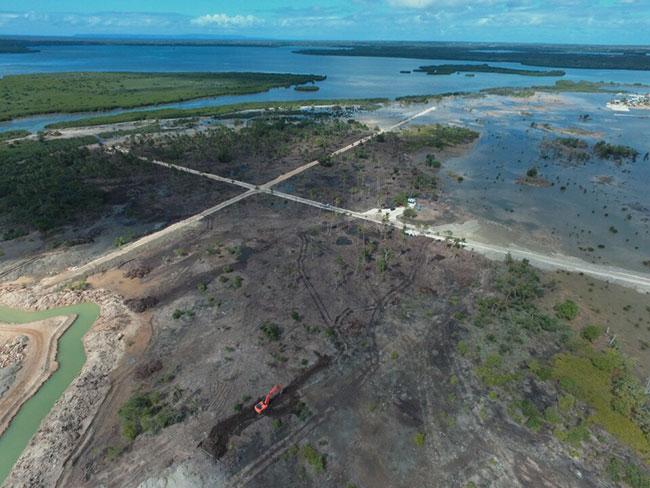
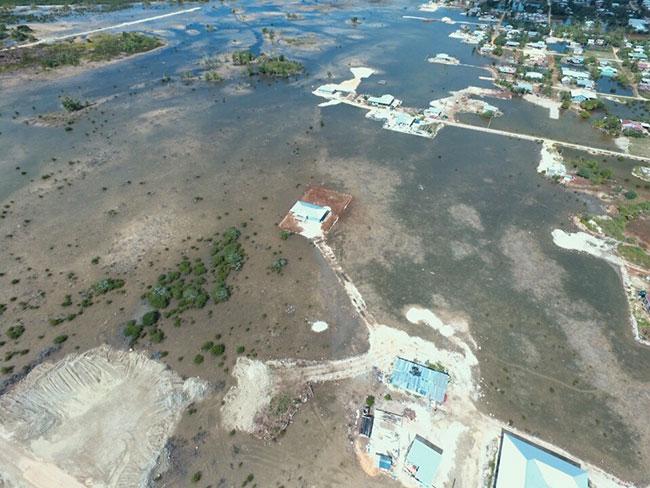
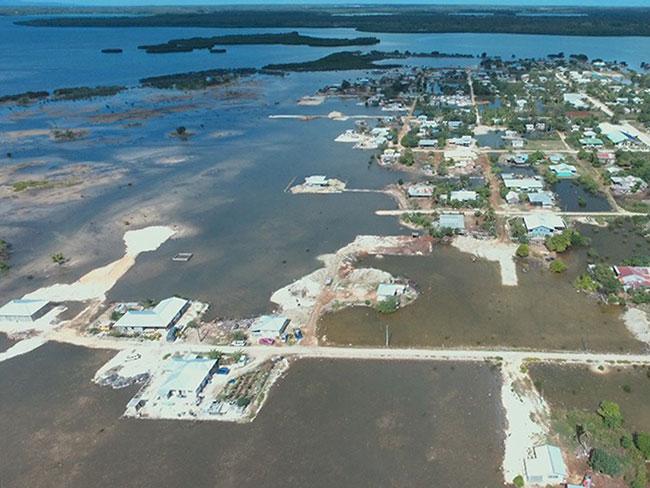



Comments
May I ask who is funding this
May I ask who is funding this golf course? If you follow the money you'll find out who is behind this venture. The PM is just a mouthpiece. Once it's up and running, most of the business people in Tonga will be members.
Be very, very concerned:
Be very, very concerned: I hold both the PM and his Deputy PM/MOE responsible for the destruction of not only a very important Tongan heritage site, but also of Tonga’s ecosystem resulting in endangering the population on Tongatapu and potentially the entire Tongan archipelago by altering the environment at Popua.
Wetlands and coastal habitats provide very important functions that protect people and the environment including flood control, coastline protection from erosion, and water quality control. With the threats of global climate change and sea levels rising, protecting our wetlands and coastal habitats become critical to survival.
Tongatapu has no rivers, because it is an atoll and saltwater intrusion is even more dangerous and problematic for atolls than for high islands, because atolls’ freshwater lenses (water tables) are small. Creating a river of fresh water leading out in the ocean will have effects similar to the dredging of reefs to create harbors: it results in the collapse of the ecosystem.
Freshwater erodes limestone and saltwater intrusion devastates the land, thereby damaging the crop farms. If I were a farmer in Tonga, I would be very, very concerned. This should rally the farmers to protest the development along with the fishermen and demand that the calamity in process at Popua to cease immediately as these violate the environmental laws of Tonga – Environment Management Act 2010 and the Environmental Impact Assessment Act 2003.
I'm a concerned Tongan, an archaeologist, and an advocate for environmental justice.
Kat Lobendahn, Honolulu, Hawai'i
We call upon our leadership
We call upon our leadership to cease and desist this construction: The EIA for the Popua Golf Course states outright that massive damage, disaster risk and environmental degradation will result. Plus the article states the EIA was done improperly only after the earthworks began to destroy the Sia Compound and build a canal. That will bring salt water inland to our farmlands, while leaking toxic pesticides (from the golf course) which will kill the reefs and fisheries on Tongatapu. We call upon our leadership to cease and desist this construction site immediately and proclaim this a National HERITAGE Park.
Fakaʻapaʻapa, Lea Lani Kinikini Kauvaka, on behalf of Tonga Voyaging Society (Member)
Congratulations Mary Lyn
Congratulations Mary Lyn Fonua for the informative, well researched, thorough, interesting and timely coverage you continue to provide about this ongoing saga. If there was a Pulitzer-type prize for investigative reporting in Tonga (Pacific Islands), you should be given the award. How Tongans at all levels of our stratified society respond or not respond to the many interconnected issues highlighted by your article, will have far reaching ramifications for future generations. The action or non-action will indicate the respect our politicians, bureaucrats, civil servants and influentials accord to our past which in turn will influence the quality of life our children and future generations will enjoy in the future. The question that comes to mind is whether the pillars/ foundation that our PM and his cabinet are laying down for the future, is on solid rock or on shifting toxic sand. Time will tell.
Has there been any response
Has there been any response to the important question asked by John_Boston on Tuesday 6 June 2017 as to who is funding this Golf course development?